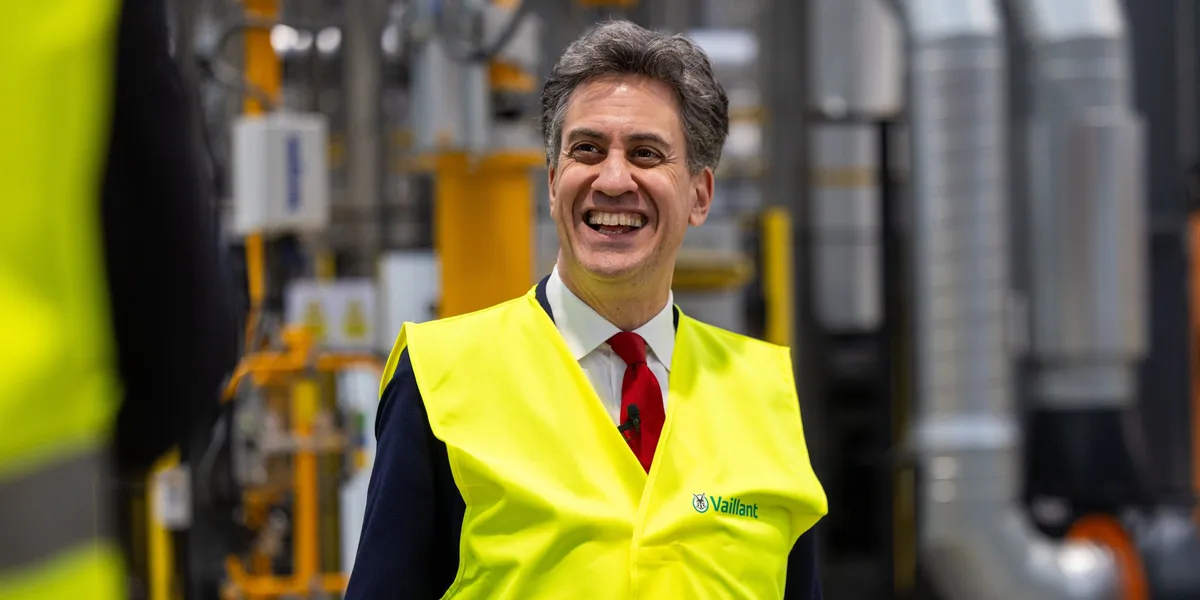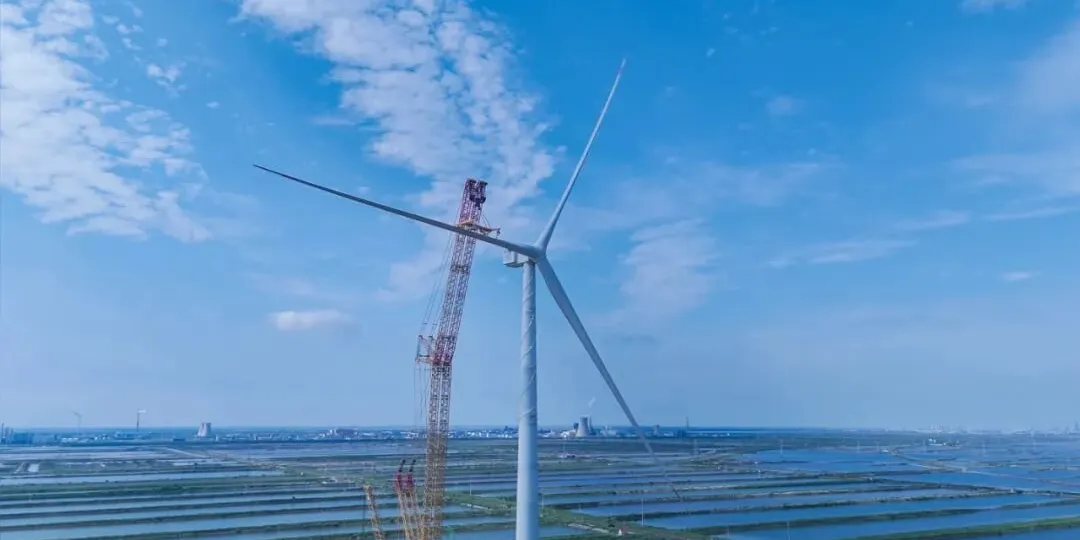Big hailstones are a significant concern for large solar farm operators. However, there hasn’t been clear data on how widespread the risk is – until now.
The bottom line is that damaging hail is occurring close to many PV solar sites across the U.S. This is just one of the insights from the seventh annual Solar Risk Assessment, a research effort led by kWh Analytics.
Using a new scientific model, researchers analyzed 4,184 solar power plants across the country. They found that every one of these sites lies within 17 miles of an area likely to experience hailstones 2 inches or larger at least once every 25 years. Notably, about 64% of the plants face a similar risk from hailstones exceeding 3 inches.
When researchers looked at a shorter period of ten years, they found about 91% of these plants could expect hailstones of 2 inches or larger.
Hail continues to represent one of the most severe financial risks for solar farms. According to the 2025 assessment, hail accounts for 73% of total financial losses, despite representing only 6% of loss incidents. This is an 8% increase from previous years.
Interestingly, when researchers evaluated all installed solar capacity in the kWh Analytics database, they found that some sites experience repeated losses (either through extreme weather or attrition) while others remain untouched. They noted that certain factors influence a site’s susceptibility to damage, including location, system age and resilience-focused design and behavior.
“Building and operating solar installations with risk mitigation in mind can significantly reduce potential losses,” researchers said in the assessment.
Related: Solar O&M hasn’t kept up with the industry’s growth, but a new training program could help. Amicus O&M Cooperative is rolling out standardized technician training to fill critical workforce gaps in solar operations and maintenance. Read more here.
Glass breakage rates (such as from hail) are on the rise, according to the National Renewable Energy Laboratory (NREL). A company called Kiwa PI Berlin investigated solar PV plant failures and discovered that glass failures contributed to up to 10% of identified failures.
In 2024, the company further looked into why some solar panels broke at five different sites in Germany. The company’s analysis investigated how the panels were assembled. Researchers found that the space between the glass and the frame wasn’t consistent—it varied more than it should have. Sometimes the metal frame touched the glass when it shouldn’t, and the layer of silicone wasn’t evenly applied. These assembly problems can make the panels more likely to crack when they experience stress from weather or handling.
To avoid a large hail loss, module selection is key, researchers said. Modules with thicker, tempered glass are less likely to have hail damage. Verifying module dimensions, such as length, width and diagonal alignment, can help detect misalignment issues. Failures can be identified during production or by operators in the field after installation.
Smoke, not just fire, affects performance
Fires account for the second-most financial losses behind hail. Unsurprisingly, researchers cited in the assessment said fire losses are significantly driven by overgrown vegetation. Risks can be mitigated by strict vegetation management, especially around inverters, transformers, and combiner boxes.
Solar assets can lose up to 6% of annual revenue from major smoke events, even when fires occur hundreds of miles away, according to new NOAA-funded research by 60Hertz Energy. This finding doubles previous loss estimates published in the 2022 Solar Risk Assessment.


60Hertz Energy’s wildfire algorithm, FLARE (Fire Linked Asset Risk Evaluation), analyzed empirical site-specific data to model both smoke and ash impacts on generation. The model looked at how tiny particles in the air, like smoke and ash from wildfires, affected the production of 40 solar power sites with a total capacity of 1.2 gigawatt-hours.
The study found that solar sites exposed to smoke for several days in a row lost a lot of power generation. Some solar developers saw their nationwide portfolios drop by 10% or more during certain two-week periods because of smoke. On average, this meant about 6% less yearly income for the affected sites from the 40 locations studied.
Researchers also found the number of “fire-weather” days, when conditions like wind, dry air, and heat make fires more likely, has gone up by 23 to 37 days each year in the Southwest and Western U.S. Even smoke from big fires, like the 2023 Canadian wildfires, can travel hundreds of miles and impact solar power far away, they said.
To address these challenges, 60Hertz Energy developed an algorithm that accurately predicts site-specific losses, with input coming from Lightsource bp, Clean Capital, SunShare, FracSun, SolarUnsoiled and others. The tool helps asset owners quantify lost generation, determine necessary soiling mitigation, measure underperformance and predict energy availability during smoke events.
Overall operational risks
Operational risks continue as PV solar assets underperform against forecasts, according to the latest research by kWh Analytics.
The company’s study found that, on average, solar power projects across the U.S. are producing 8.6% less energy than expected based on their original forecasts, called P50 estimates. This matches the findings from a similar 2022 report.
kWh Analytics has been analyzing performance data from over 34,000 system-months spanning 2015 to 2023 from its extensive production database. Overall, the data shows that solar performance has slowly declined over the past few years, with the biggest drops happening in winter.
kWh Analytics said the available data doesn’t clearly explain why this is happening. Some possible reasons include losses from like bad weather, shading or equipment problems; systems being curtailed due to grid limitations; and forecasts being too optimistic or financial models being designed to look better than reality.
Interestingly, solar sites in the Southwest are doing the best, while sites in the South are seeing the worst performance, especially in the past few years. Researchers said one likely reason for the Southern drop is curtailment, when solar power can’t be used because there’s too much energy on the grid. Adding battery storage could help fix this.
Overall, researchers are calling for better forecasting tools and more accurate performance data. If forecasts are inaccurate, this can lead to financial problems, less investor trust and slower growth for the solar industry.
What about batteries?
The Solar Risk Assessment also highlights the latest operational challenges and studies in battery storage. One observation in the report is that BESS needs better thermal management and early detection systems.
In 2024, Clean Energy Associates (CEA) conducted 330 comprehensive factory inspections in BESS manufacturing facilities worldwide, covering 29 gigawatt-hours (GWh) of lithium-ion battery systems. CEA’s inspections found that quality issues in the fire suppression system were among the most frequent, observed in 28% of the audited units. These quality issues included non-responsive smoke detectors, malfunctioning fire suppression actuators and incorrectly wired alarm systems.
“There are many opportunities to catch these problems, including production audits, factory acceptance tests and during commissioning,” researching engineers said.
Defects in auxiliary circuit panels were found in 19% of systems, including issues such as exposed wiring, improperly installed circuit breakers, and poor wiring practices. These are problems that can lead to electrical failures, unplanned downtime and safety hazards.
Thermal management system failures were identified in 15% of the audited BESS units, most often due to coolant leaks from unsecured pipes, faulty temperature sensors or malfunctioning circuit boards. These issues heighten the risk of overheating and can trigger thermal runaway–a dangerous condition that may result in battery fires. The most common causes of these quality issues were the use of nonconforming materials, substandard installation practices and inadequate internal quality control.
As global BESS manufacturing scales up, researchers said these findings underscore the urgent need for stronger quality assurance to prevent costly failures, safety risks and long-term threats to industry viability.
In 2024, EPRI published the industry’s first aggregate root cause analysis of BESS failures, based on its Failure Incident Database, which tracks utility-scale and commercial BESS events involving thermal runaway or fire due to system or component failure.
Out of 81 recorded incidents, only 26 had sufficient data to determine root cause. Since the database relies on public reporting, some incidents may be unrecorded.
Most failures (72%) occurred within two years of installation, with nine incidents between 2018–2023 happening before systems were operational—often due to offline monitoring that allowed minor issues to escalate. With 78% of the fleet installed in the last two years, ongoing safety monitoring and maintenance will be critical, the assessment noted.
The good news? While recent BESS fires have received significant media attention, researchers reported the overall rate of incidents has sharply decreased, dropping 98% from 2018 to 2024.
Originally published in Factor This Power Engineering.








